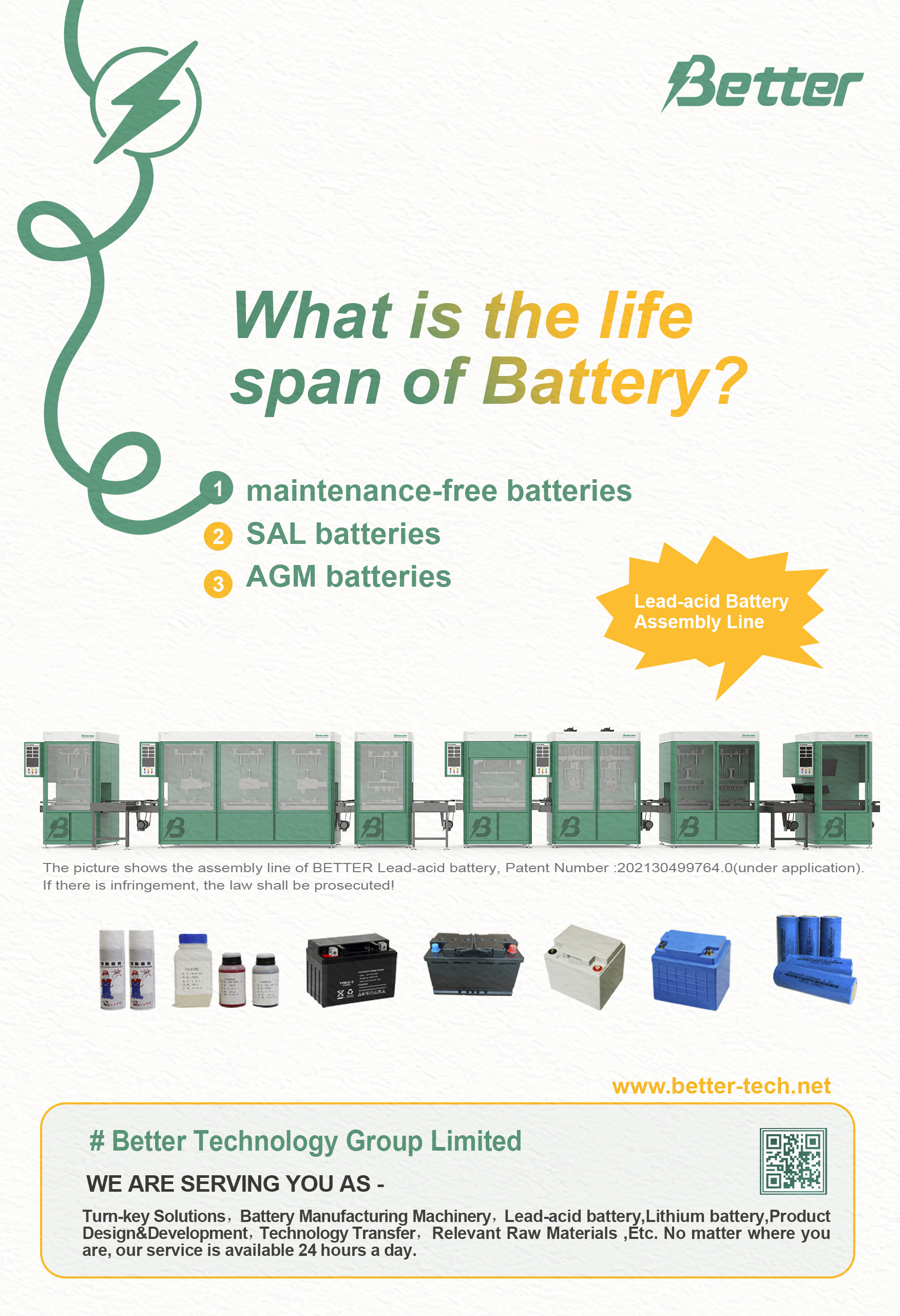
What is the life span of maintenance-free batteries, SAL batteries and AGM batteries?
2021-12-23 16:071. Life characteristics of common maintenance-free batteries, SAL batteries and AGM batteries
The life of a battery usually refers to: when the actual capacity of the battery cannot reach more than 50% of the rated capacity, it is called the end of its life. According to the purpose, the life is often expressed by the total number of cycles or the time it could be used. The life of the battery is also closely related to the use conditions.
Factors affecting battery service life
There are many factors that affect battery service life. The most important one is related to the use of the battery. The specific factors are as follows:
1.1 Temperature
Too high temperature will accelerate the aging of the battery and shorten the life of the battery (Charging at too low temperature will easily produce hydrogen, which will shorten the life, which is especially obvious for floating charging applications).
1.2 Depth of discharge
The more discharge each time (the greater depth of discharge), the shorter the cycle life will be (overdischarge is especially harmful!!)

1.3 Discharge current
Excessive discharge current will shorten the cycle life of the battery.
1.4 Charging current
Excessive charging current will also shorten the life of the battery. (Recent reports indicate that proper high-current charging is good for battery life).
1.5 Degree of overcharge
Each type of battery has a recommended charging method. When the battery is overcharged, the battery life will be shortened. Pay special attention to the use of floating charging!
2. Lifespan of common battery types
2.1 Ordinary lead-acid battery (life is 2-4 years)
Lead-acid battery is the earliest and most common type of storage battery. Its electrodes are composed of lead and lead oxides, and the electrolyte is an aqueous solution of sulfuric acid. Generally speaking, this kind of battery has the advantages of low price and stable voltage, but this kind of battery has a relatively short life and has more maintenance times. Under normal use, the life span is about 3 years, and the cycle charge and discharge is about 300-500 times.
Of course, if you want to reach the limits of this type of battery and extend its service life, you can check the electrolyte level every 10,000 kilometers and replenish it in time keeping it at a proper level to extend the service life of the battery. However, most of the 4S shops have stopped this kind of additional service, and car owners can only go to the repair shop or operate by themselves.
2.2 Maintenance-free battery (life is 2-4 years)
The biggest advantage of a maintenance-free battery is that it does not require maintenance. Compared with lead-acid batteries, this battery consumes very little electrolyte and does not need to be supplemented with distilled water during use. It also has other features like high temperature resistance, small size, and small self-discharge. Of course, with so many advantages, the price is naturally not cheap. Typically, it costs about twice as much as common lead-acid batteries. As for the service life, the replacement cycle of a maintenance-free battery under normal conditions is about 3 years, which is equivalent to that of a lead-acid battery.
2.3 AGM/ Automatic start-stop special battery (life is 4-6 years)
Engine with automatic start and stop can save fuel better, so many manufacturers now apply this technology to the car. However, at this time, many friends may ask: Every time a car with automatic start-stop has to start the engine when it goes forward after it is turned off, isn't it a waste of batteries? That's right, this is the case. But it is clear that the manufacturer has taken the situation into consideration, so the automatic start-stop car is equipped with special AGM batteries. AGM battery refers to a battery that uses ultra-fine glass mat as the separator. The cycle charging capacity of this battery is 3 times higher than that of a lead-calcium battery and has a longer service life. In addition, the battery has a better low-temperature starting effect, and the capacity is more stable during use, but the price is also the most expensive.
